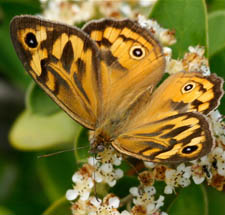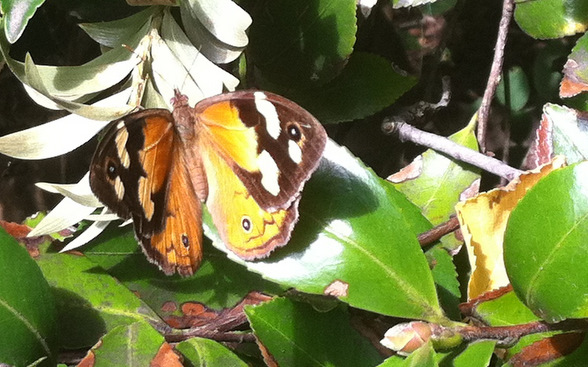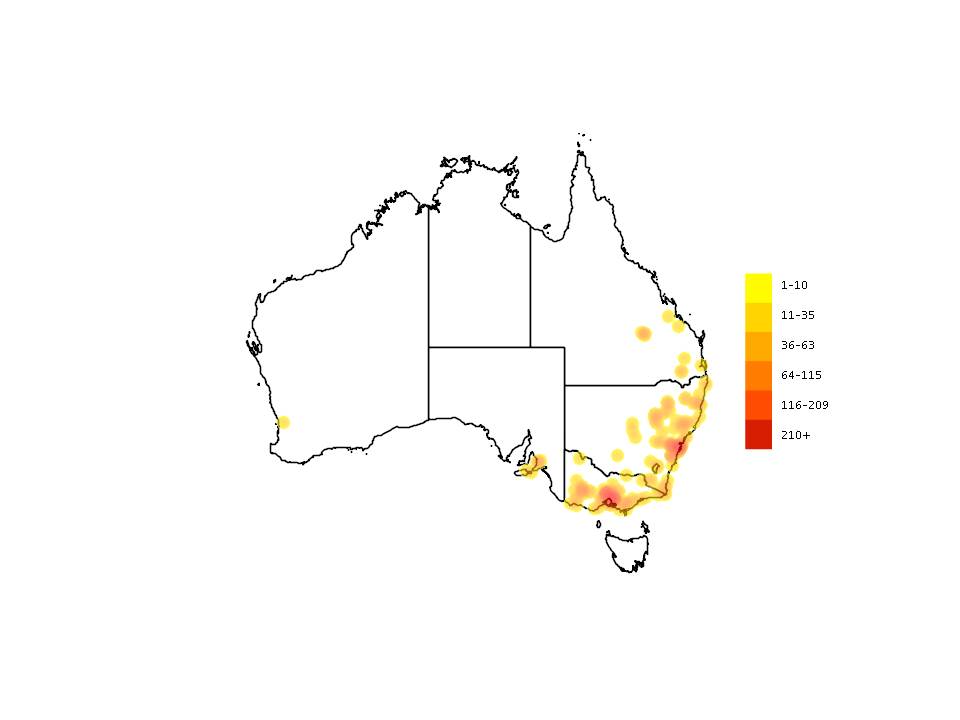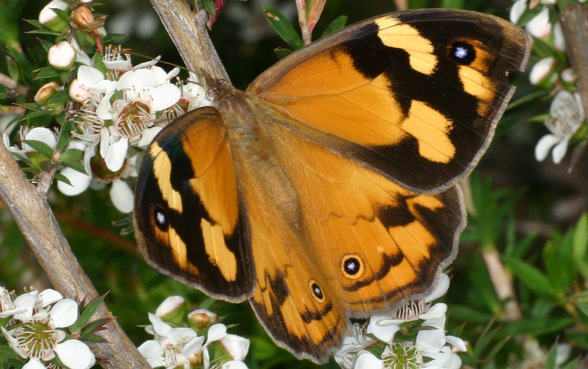Behaviour
Diet
The caterpillar eats various native and introduced grasses, while the butterfly drinks nectar from flowers. The butterflies are also attracted to fermenting fruit and gum seeping from tree wounds.
Movement
When a caterpillar is disturbed while feeding, it drops to the ground and lies still. When male butterflies are not feeding, they fly close to the ground looking for females. If disturbed, a female butterfly will reject the male by lying on the ground with her wings closed. Butterflies fly from October to May, depending on the area and elevation; they emerge later in higher and cooler areas. There is a predominance of males in the earlier part of the season and females in the later part.
Flight
Irregular, these butterflies prefer to settle on or near the ground.
Breeding
Mating occurs from October to December, after which the males die. The females rest through summer (known as aestivation) and appear again in late February to early May to lay their small, pale yellow eggs on the underside of leaves. The females die shortly after laying the eggs and the caterpillars hatch from the eggs after about 12 days.
Field Guide
Improve your identification skills. Download your Common Brown Butterfly field guide here!





